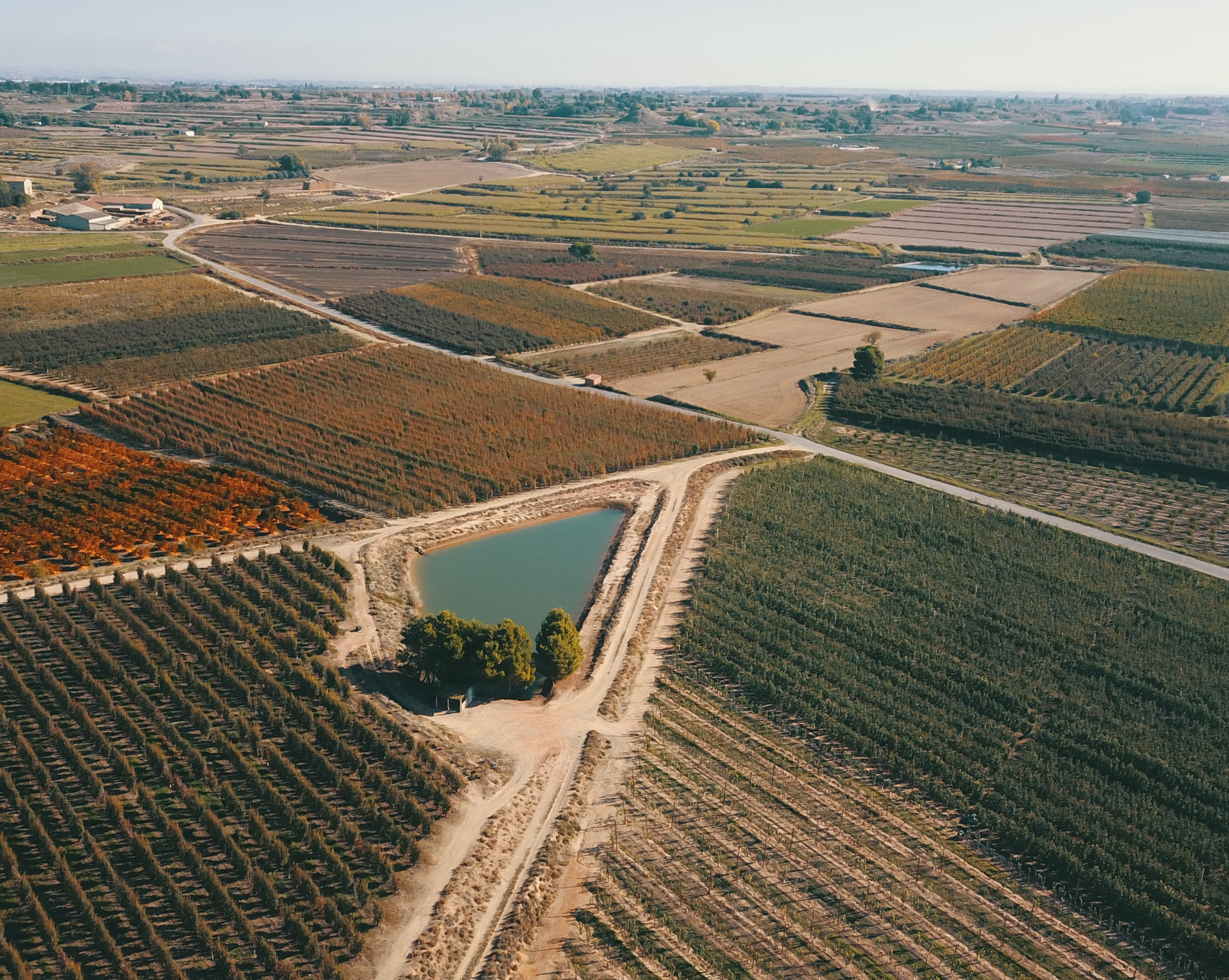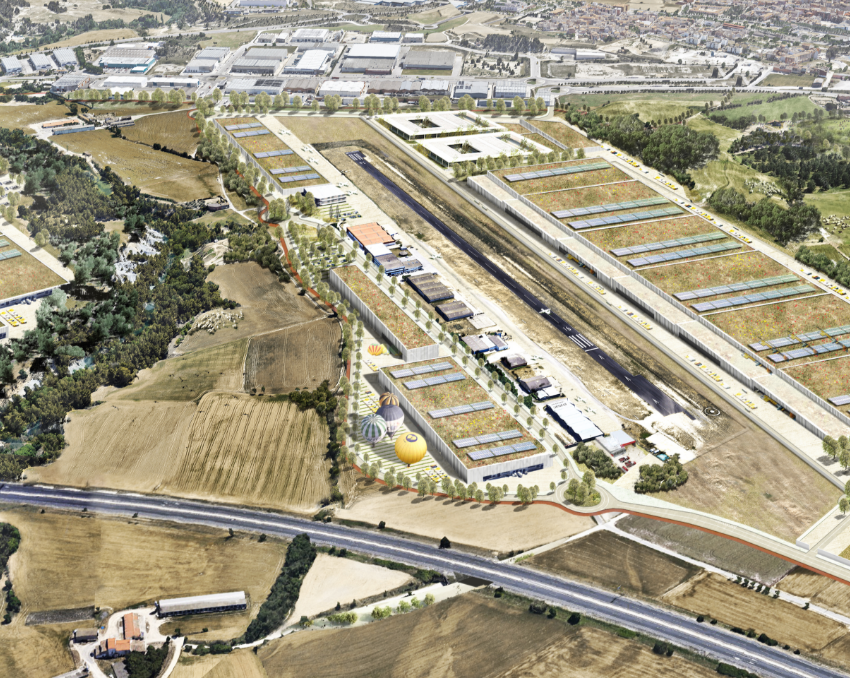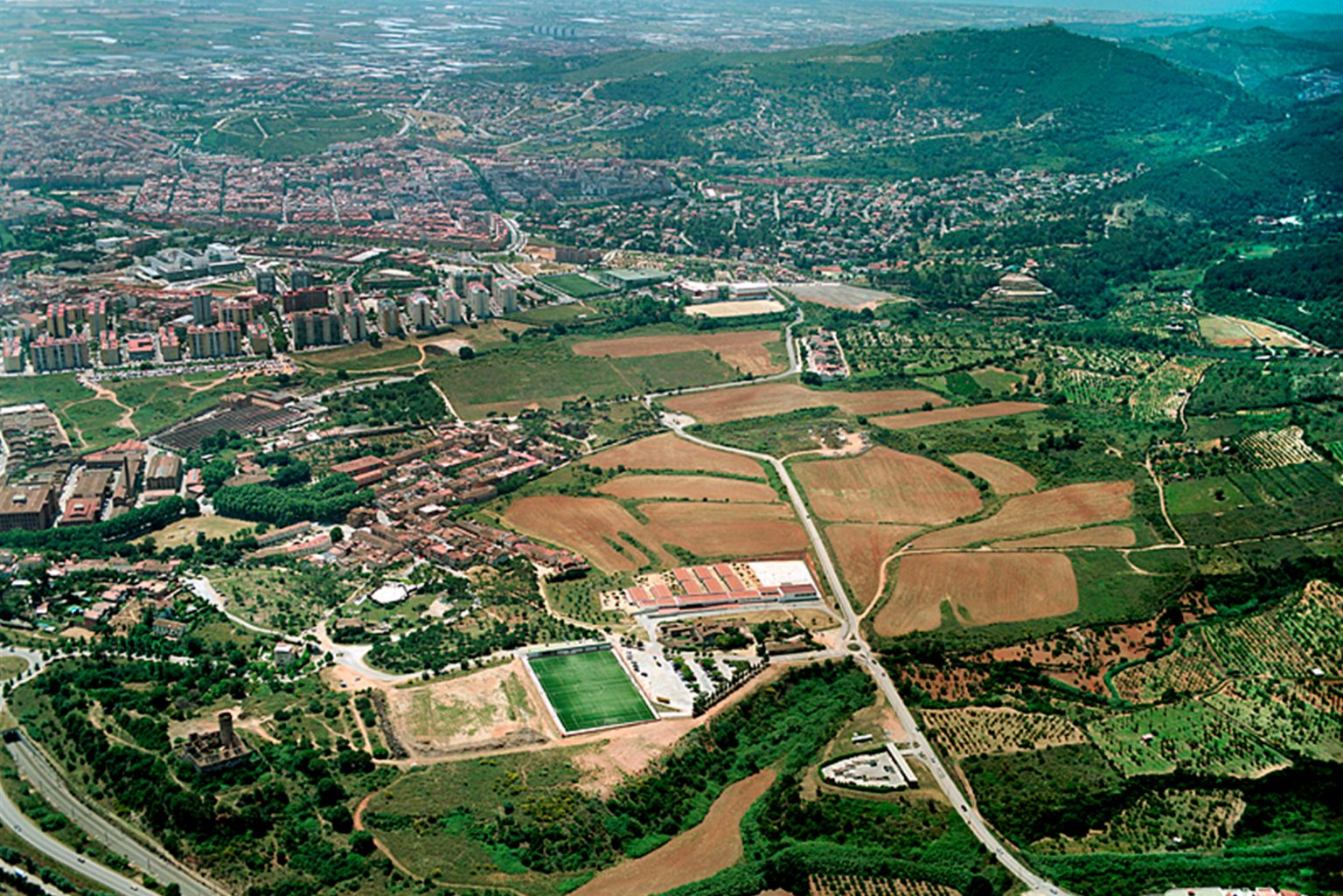23
October
2017
Share on networks
Interview: Ricard Font

Ricard Font, Secretary of Infrastructure and Mobility, Government of Catalonia
Transport infrastructures are of immense strategic importance for the economic improvement of Catalonia, as logistics hubs in the Mediterranean and for the consolidation of the region and its capital, Barcelona.
What infrastructures do the Catalan Government consider essential in this consolidation process and why?
If we make an in-depth analysis of our country, we will find that Catalonia is an area of transit with a great level of industrial and export activity, with the desire to open itself up to the world. At the same time, a significant part of the Catalan population is concentrated in Barcelona and its metropolitan area, where it constitutes a driving force for the economy. That said, the key infrastructures for our region are precisely those that can provide synergies and create added value to the structure of both the region and the country.
In Catalonia, the Mediterranean corridor is undeniably the central core that channels an economic structure that is not only industrial, but which includes food production, the petro-chemical industry, know-how and research and development. As such, it is an essential infrastructure for the progress of the entire region, so as to improve our region’s economic competitiveness and broaden its internationalization. Furthermore, when seen as a multimodal transport axis, the corridor will provide a new impetus for a more efficient, less pollutant and more sustainable mobility.
In the Barcelona metropolitan area, efficient and sustainable mobility is essential for both quality of life and the health of its populace, as well as to increase the efficiency of our transport system. One fundamental measure, which would make this possible, is the improvement of the suburban Barcelona train service, which is today the weakest link in the entire public transport system and when viewed in terms of urban and suburban mobility in a threefold context of capacity, reliability and performance. The improvement of the Barcelona suburban service would capture the mobility of private vehicles, and as a result reduce emissions and decongest the road networks in terms of goods transport. In this context, Plan 306 – the commitment to promote priority actions in the General Interest in the Railway Network (RFIG) for the improvement of the safety, reliability and functionality of the Catalan suburban rail network – is definitely a key element for the consolidation of this process to improve mobility.
What is the real importance of infrastructures in the capturing of investment in Catalonia?
Infrastructure constitutes one of the four basic pillars that influence attracting investment at a national level, along with development in education and technology, health and institutions.
As such, it is clear that for Catalonia – a region with marked technological development, with talent, a productive fabric and an excellent level of education and health – infrastructures are essential for making our country more appealing in terms of attracting investment.
Figures show that 2016 was the best year for Catalonia in terms of attracting foreign investment since records began in 1993. Last year Catalonia attracted 5,052 million euros in foreign investment, 2.4% more than in 2015.
These excellent results in recent years, regarding investment attraction, are due to a series of factors that make Catalonia a region of interest for investors, factors that include our lifestyle, a highly diversified and industrialized economy, and the talent of people ideally-suited for creating start-ups. Add to all this, the fact that Catalonia occupies a strategic geographical position as a southern gateway to the Mediterranean, and that it possesses key infrastructures (such as the port of Barcelona, the El Prat Airport, a powerful, high-capacity road network and our public transport system) that make it both a catalyst and a driving force with respect to investment attraction.
Despite the excellent results detailed here, it must be said that Catalonia is a transit region, one in which the flows of goods is highly important, and as such, it requires an adequate provision of infrastructures, which today, in some areas – especially in the terms of rail freight transport – there still has a long way to go.
In this sense, the Mediterranean Corridor opens up new opportunities with respect to establishing the region as Europe’s southern gateway, in order to attract goods that are currently shipped by sea from Asia to Northern European ports, and the idea that stopping here would be an excellent opportunity to create greater added value and further internationalize our economy.
Today, and despite excellent investment results in Catalonia, divestment in these key infrastructures is curbing potential in the attraction of new investments and the competitiveness of the region. This can be seen with just a few examples, without entering into too much detail:
- The A-27 between Tarragona and Montblanc will provide significant support for the Port of Tarragona with regard to improving competitiveness. Travel time for goods transported by road to Tarragona will be reduced by one third of the time it takes now, as the final section currently requires goods vehicles to take the N-240 and cross the Coll de Lilla.
- B-40. A recent study commissioned by the Mercadona national supermarket chain revealed that the company, whose logistics centre is located in Abrera, faces annual loses of € 1M per year due to the unfinished construction work on the B-40 road, penalizing the distribution of merchandise from the centre with the Vallès region. The completion of the B-40 will result in operational savings for logistics-based activities due to an improvement to supply and distribution chains. It has been estimated that more than 2,500 heavy-duty vehicles could take this route, and that this traffic would benefit from a saving in terms of internal operational costs of € 6M a year.
- La Sagrera station. This comprises 160 hectares; 3.7 km2 of an immense bowl, where infrastructures, an urban park and several buildings need to be constructed. This project could produce 25,000 new inhabitants and approximately 30,000 new jobs.
Suburban rail networks. The lack of investment planning in the Suburban Rail Plan (Pla de Rodalies) and Plan 306 imply a lack of capacity, reliability and service provision, which impacts road congestion and air quality on the road network. If no urgent action is taken, congestion on access roads to Barcelona will increase by 50%, with a resulting decrease in air quality, which must be added to the inefficiency of goods transport by road due to congested road networks, which with a well-fortified suburban rail network could attract many private vehicle users.
- Access to the Port of Barcelona. The location of the Port, in the Llobregat Delta, between the Garraf Massif and the city of Barcelona, limits connectivity with its hinterland at the Llobregat highway network – a road system that is currently facing problems of both congestion and mobility that have been aggravated by urban pressure in the area. These problems could be resolved with new road and rail access projects.
- Vandellòs – Tarragona. Establishing viable service in this rail corridor would allow savings from 10 to 15 minutes between Tortosa – Tarragona and Tortosa – Barcelona respectively.
- Mediterranean rail corridor and access routes. This would achieve a suitable transport supply offer with respect to capacity and quality in the transport of goods and people, together with a reduction in emissions and harnessing the ports and airports of the Mediterranean as the gateway of Southern Europe, with a more efficient, sustainable and competitive connection in both time and costs for maritime and air goods traffic between Asia and the centre of Europe.
Which essential infrastructures are under construction today and which could be initiated in the short-term? What are the priorities involved?
Catalonia is faced with the paradox that strategic infrastructures – which are state-owned – are in fact those that are suffering from under-investment by the Spanish State, i.e. we are dealing with the combination of two concepts that are essentially contradictory – “strategic infrastructures” and “under-investment” as a strategy for prioritizing investments.
Getting down to the basics of what these essential infrastructures involve, the issues here involve priority actions in the area of the suburban rail network, as is the case of the implementation of a new track on the R3 line; the new airport shuttle train, the Suburban Rail Network (Rodalies) Plan; Plan 306 – with initiatives aimed at increasing the safety, reliability and operability of the suburban rail service; the train stations of La Sagrera and Sant Andreu Comtal, and the construction of underground lines at Montcada, Sant Feliu and l’Hospitalet de Llobregat.
In terms of the Mediterranean Corridor, we are dealing with the issue of road and rail access at the Port of Barcelona, the Vandellòs-Tarragona section and the adaptation to UIC width on the Castellón – Vandellòs and Vila-seca – Castellbisbal route sections, among others.
In terms of roads, problems here concern the Ronda del Vallès (B-40) ring-road, the widening of N-II national highway in Girona, the improvement and the widening of the N-240 national highway (the A-27 Valls – Montblanc dual carriageway), the widening of the N-340 national highway (A7), the A-2 / AP7 / B-30 connection, the connection with the coastal ring-road / C-32 at Sant Boi, and the Vallirana by-pass, among others.
In all cases, these examples are infrastructures that were demanded many years ago and projects that have been promised for some time now in numerous different agreements and protocols that have still not been implemented. These include the Agreement for the Undertaking of Priority actions on the Catalan Road Network, which includes a 2006-2012 Investment Plan, the 2006-2012 Protocol for the Improvement of the Catalan Railway Network, or the 2008-2015 Suburban Rail Network (Rodalies) Plan.
The Mediterranean rail corridor is a historical demand within this series of infrastructures. What is its current status?
The Mediterranean Corridor has been discussed for many years now. And for a long time we have continued to support it and debate both its justification and the need to prioritize this project. Any analysis, whether it focuses on demand or on cost-benefits, shows that the Mediterranean Corridor makes more sense than other rail investments. However in the meantime, we have seen how other multimillion-dollar projects with much less economic and social benefit for the Spanish State were allocated priority.
In an erroneous and stubborn manner, a politically-based radial project, one that acts against the country’s economy interests has been given preference, in the same way that high-speed passenger transport was prioritized instead of freight transport. The result is that a great deal of money has been lost; buried in projects that not only produce low economic returns (as is evident) but are also far-from productive in social terms.
The Mediterranean Corridor is an essential infrastructure for the economic and business development of a region such as Catalonia, which is connected to the Mediterranean and to Europe.
It comprises an area that is outstanding in terms of industry, exports, the attraction of investments, innovation and tourism. Below is just a sample of data on the Mediterranean Corridor area:
- The entire Mediterranean Corridor area creates over 45% of Spanish GDP and almost 46% of Spain’s Gross Industrial Added Value.
- It accounts for 50.6% of exports and 49.4% of the total imports from the state as a whole.
- In terms of company numbers, the area accounts for 63.1% of export companies and 61.9% of import companies.
- It is the location of 49.3% of Spain’s innovative companies and 46.7% of its technologically-innovative companies.
- The area receives 50% of all international tourists who visit the country.
- According to FDI Markets, it is responsible for 68.5% of all investment received by the state last year.
- Mediterranean Corridor ports account for over 60% of goods transportation and over 80% of container transport.
With respect to the current situation at an overall level, state development levels are extremely slow, which makes it extremely difficult for us to attain compliance with the prioritization established by the Catalan Corridor Agenda document.
In specific terms, the current status of key CMED (Mediterranean Corridor) rail infrastructures is as follows:
- Rail access from the port of Barcelona. This is a policy included in the 1995 Delta Plan. Work should have begun in 2008 and have been completed in 2012. To date the railway accesses have not yet been licensed, pending project definition reformulation.
- Vandellòs – Camp de Tarragona. The track widening project, with a new layout of the single line corridor began in the year 2000 and to date has not yet been completed. Over the last 17 years the project has been the subject of numerous non-completion notifications. The most recent announcement, made by the Ministry of Development, is that the line will be opened in 2018. It must be noted that the Barcelona-Valencia line is the conventional long-distance line that carries the most passengers, exceeding the figures of several high-speed lines. The new high-speed corridor (200 km/h), with a length of 44 km, will have taken 18 years for completion, at an average rate of 2 km per year.
- UIC width adaptation between Castellón – the Vila-seca Junction – Castellbisbal. In 2012, the Ministry of Development stated that in 2015 this line would be adapted to European UIC width. Although the contract was awarded in 2013, to date the work has not been undertaken, and has not even started, beyond certain specific tasks and material storage. Given this situation, a new Ministry of Development commitment arose for 2019-2020. Planned investment is estimated to amount to some € 445 M for a 189 km corridor. In total, this amounts to 8 years for the expected term of completion and a minimum delay of 5 years, while work has still not yet begun.
- La Sagrera Station. Work on the structure of train station was offered for tender by ADIF (State Rail Infrastructure Administration) in 2010, however all work has been halted since 2014, with only 21% having been undertaken. Situation status: Sagrera Sector: works on the Rambla Prim wastewater deposit, the most critical project, started on June 2017 and completion is expected in mid-2018, while work on the station will restart in late 2017. Sector Sant Andreu Comtal: work stopped (legal problem under analysis by ADIF, although the station will be provided with disabled access before the end of 2017).
- Rail access to the T1 terminal at Barcelona airport. The initial-stage works were awarded in 2010 and were later halted. The infrastructure work is currently in progress (the tunnelling machine has already begun) and completion is expected in 2018. The screens for the new T2 terminal station are also underway. Other projects will require definition once the infrastructure work has been completed, meaning that in the best scenario, operability will begin after 2020 (internal prediction).
- Installation of the 3rd track on the Reus – Vila-seca line. The Catalan Dept. of the Environment and Sustainability (DTES) requested the promotion of project tender so that work can begin alongside the installation of the mixed width lines on the Vila-seca-Castellbisbal route. To date the Ministry of Development has merely drafted the construction project and there is no plan for tender (the DTES would prefer simultaneous work to be undertaken with the Vila-seca – Castellbisbal junction).
It is also necessary to add to the above those actions in which the drafting of the construction project has not even been completed, such as the Terminal de l’Empordà (Vilamalla), the Vallès Terminal (La Llagosta), the LC-LAV high-speed line at El Penedès, the Girona Airport LAV high-speed rail line (this has never been planned by the Ministry of Development) and the new rail access to the Port of Tarragona.
In addition, other actions that have never been planned by the Ministry of Development are the Reus – Roda de Berà rehabilitation, the construction of a 3rd track between Vilamalla and Portbou or a 3rd line installation for the Saragossa – Lleida – Tarragona route.
The phrase ‘chronic investment deficit by the State in Catalonia’ is used. Which infrastructures are held up or delayed because of this?
In the investment planned by those companies that mainly work on the construction of infrastructures, i.e., Ports, AENA, ADIF and SEITTSA, data shows that Catalonia continues to be ranked well below the level that would correspond to it with respect to GDP and even in terms of population.
The percentage of regional investment in the General State Budgets for Catalonia (9-13%) differs greatly from the influence of Catalonia in terms of state GDP (19%) or the significance of Catalan exports throughout Spain as a whole (over 25%).
However this low percentage of regionalised investment, one foreseen in both the budgets and in their projections, is doubly affected in terms of investment, as there are far more budgetary adjustments in the case of Catalonia. According to data from the Barcelona Chamber of Commerce, during the severest years of the economic crisis – between 2009 and 2014 – budgetary adjustment of investment undertaken by the General State Administration in Catalonia was 71%, while in other regional communities, the figure was 53%. During this period, the most important investment made by the Ministry of Development in Catalonia was the extension of the Port of Barcelona, however it must be taken into account that a significant part of this project was financed by the port itself.
Also according to the Chamber of Commerce, with respect to Development Group (the Ministry of Development and public companies) investments, the amounts actually provided were less than those pledged for 11 consecutive years (2001-2011).
This under-investment has a direct impact on essential public services, such as the suburban rail network, as well as on the competitiveness of the Catalan economy, which includes the Mediterranean corridor, access to ports and airports and national highways that should have been widened years ago, to name but a few.
Finally, can a realistic implementation schedule be considered for the infrastructure projects that are under way or which are planned for the future?
Given the current pace of state investment in several strategic infrastructures, establishing a realistic implementation schedule is an academic exercise.
By way of example, if we extrapolate the pace of de facto implementation for the most significant plans and actions for state-financed strategic infrastructures in Catalonia, the following calendar would be applicable:
- Suburban Rail Network Plan 2008-2015: Completion: 2061(instead of 2023)
- Mediterranean Corridor: Completion: 2039 (instead of 2023)
- The R3 railway line: It would take 233 to complete widening
- NII national highway: 35 years of delay
- The A-27 motorway between Valls and Montblanc: Completion 2042
- The B-40 to Sabadell: Completion 2042
- Port of Barcelona road access – in progress since 2015: 14 years of delay.
To add yet another figure; we have to look back 35 years to find the last great infrastructure undertaken by the State on the suburban rail network: the Papiol – Mollet del Vallès corridor (now the R8), whose origins go back to 1982, when a new rail line was commissioned in order to prevent freight being transported through the city of Barcelona.
And one final point. The latest report from the Official Chamber of Works Contractors of Catalonia shows that the investment in projects tendered by the State in Catalonia during the first three quarters of 2017 was 99 million euros, which amounts to 60% less than the quantity for the same three quarters in 2016. The Catalan Government, together with local authorities, pulled together a joint tendered investment almost 10 times greater than this figure during this period, with a difference of 60% more tendered investment compared to the same period in 2016.
With precedents of this nature in development and investment levels in recent years, not only is it impossible to establish a credible or realistic agenda for works and actions, the lack of willingness to invest in Catalonia is also blatantly obvious, even in those infrastructures that are essential or strategically vital for social progress and the competitiveness of the country, such as the Mediterranean Corridor.
As such, time has shown that different governments come and go, under different colours, but that this situation can only be reversed by having our own tools – assuming authority ourselves, and with the possession and ownership of our own resources and infrastructures – in order to be able to manage and invest in productive infrastructures for a region that is increasingly competitive and open to Europe and the world. Only under our own jurisdiction and with our infrastructures is it possible to fulfil our potential for change, look to the future and move towards the new challenges of 21st century mobility.









Subscribe our Newsletter
Subscribe
Follow us on social